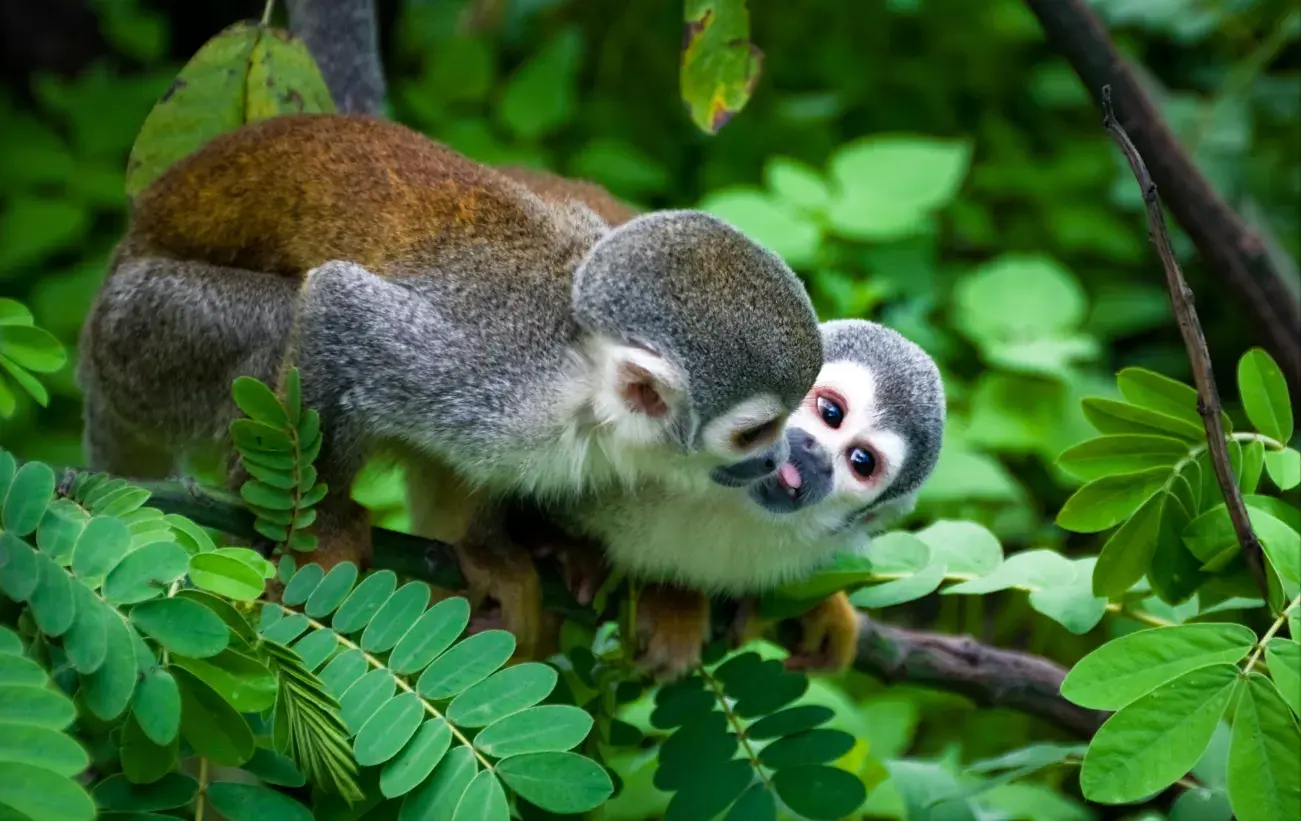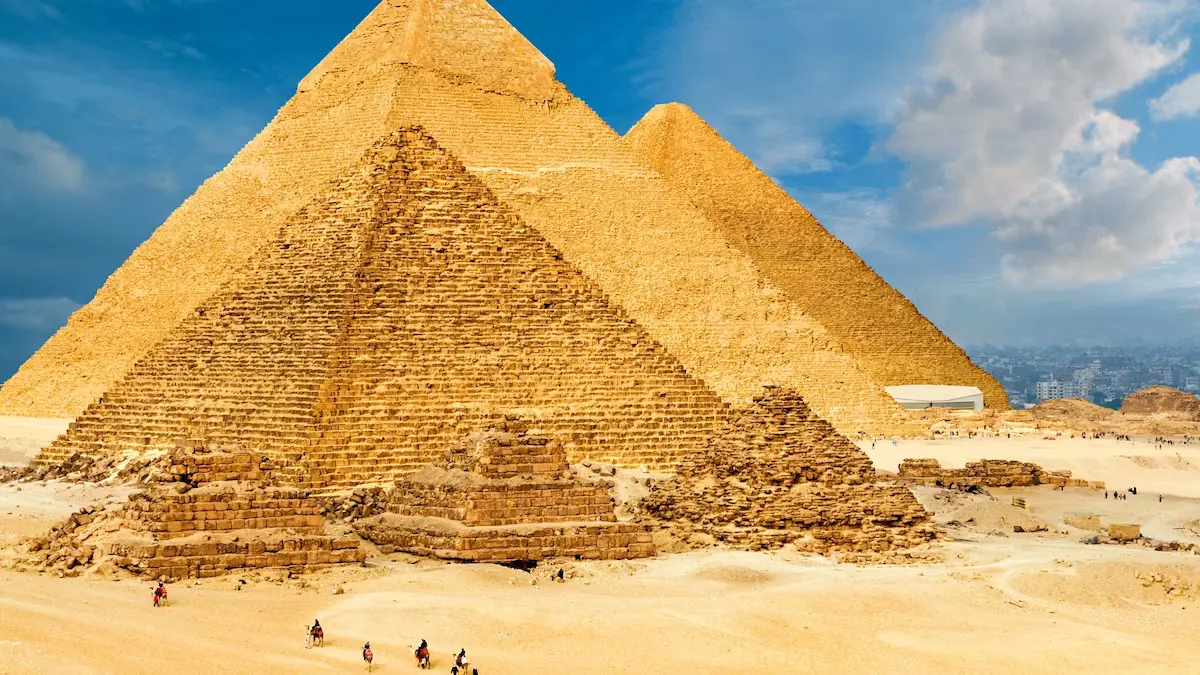The Amazon Rainforest is called the “Lungs of the Earth” and is the huge tropical paradise located in the territory of nine countries in South America. Representing more than 10% of the world’s known biodiversity, the Amazon Rainforest gives travelers a once-in-a-lifetime experience that involves the most outstanding nature and wildness you could ever imagine. In this article, you will find out more about the Amazon Rainforest and the adventurous journey that awaits you there!
The Unique Biodiversity of the Amazon Rainforest
The Amazon Rainforest is known for its unparalleled biodiversity, housing millions of species of plants and animals.
- Flora: The Amazon is home to over 40,000 plant species, from towering canopy trees to delicate orchids. Some highlights include the giant kapok tree, the Brazil nut tree, and the Victoria Amazonica, the largest water lily in the world.
- Fauna: More than 1,300 bird species, 430 mammals, and 3,000 types of fish inhabit the Amazon. Spot colorful macaws, playful river dolphins, jaguars, and the elusive harpy eagle.
- Reptiles and Amphibians: The Amazon is home to fascinating reptiles and amphibians, including caimans, anacondas, poison dart frogs, and the Amazonian tree boa.
- Insects: With over 2.5 million insect species, the rainforest is teeming with colorful butterflies, giant beetles, and the notorious bullet ant.

Adventure Activities in the Amazon Rainforest
There is much more to the Amazon Rainforest than just its flora and fauna – there is an entire adventure for nature lovers and thrill-seekers. Some of the most popular activities include: trekking through the dense jungles with a guided, learning about the plants, animals, and people – in Anavilhanas Archipelago or the Mamirauá Reserve. Going on wildlife tours and seeing jaguars, tapirs, sloths, and howler monkeys in their natural environments.
Mixing serenity and zooming down the streams and flooded forests on canoeing and kayaking trips – it is also a great opportunity to spot the Amazonas’s pink river dolphins, caimans, and birds of all kinds. Fishing for piranhas and learning more about the fish’s place in the river system. Taking night safaris to photograph caimans, owls, and giant tarantulas. Or soaring through the canopy on a zip line or a canopy walkway.
Exploring Indigenous Communities and Culture
The Amazon is not just a haven for wildlife but also a place of rich cultural heritage.
- Meet the Locals: Visit indigenous communities to learn about their traditional lifestyles, customs, and sustainable living practices.
- Handicrafts and Cuisine: Explore local markets for unique handicrafts like woven baskets, jewelry, and carvings. Sample traditional Amazonian dishes like tacacá and pirarucu.
- Shamanic Traditions: Participate in spiritual ceremonies led by shamans and discover the healing properties of native plants.
River Cruises and Lodges in the Amazon Rainforest
Discover the rainforest with Maximize your immersion experience by additional ways to discover the rainforest.
River Cruises: Float down the Amazon River on small river ships and explore the rainforest via excursions, wildlife safaris, and five-star dining. Alternatively, to get close to Amazon’s nature and fauna while also appreciating the comfort of a hotel, book a resort escapade – Eco-Lodges: Go into the jungle and stay in an eco-lodge.
Top Destinations in the Amazon Rainforest
While Amazon Rainforest is a diverse and extensive forest, its destinations are selected by frequent travelers.
Manaus, Brazil is a cultural and adventure hub offering a visit to the iconic Teatro Amazonas, as well as possibility to head to the Anavilhanas Archipelago and river Rio Negro.
Iquitos, Peru is the largest Amazon city as well as a touristic center, and from there one can book an adventure to the Pacaya-Samiria National Reserve and take a cultural trip to Yaguas and Bora villages.
Leticia, Colombia is located at the Colombian, Peru, and Brazilian border, and it is the best choice to go on a tour to the Amacayacu National Park. Madre de Dios, Peru region is an especially attractive destination that hosts Tambopata National Reserve with clay licks that gather ten of thousands of macaws and perrots.
Cuyabeno, Ecuador wildlife reserve is another ecotourism place that allows visitors to see pink river dolphins, giant otters, and numerous birds.

Sustainable Tourism in the Amazon Rainforest
The Amazon Rainforest is fragile and needs to be preserved. Travelers can help do it the following ways:
Eco-friendly accommodations – opt for eco-lodges and hotels that value sustainable use of resources;
Support local communities – buy handicraft from local residents and book a tour with the locals that run it;
Plastic waste – cut the use of plastic and take a reusable water bottle, reuseable cutlery, and a bag;
Wildlife tourism – follow the guidelines and distance with animals.
Planning Your Amazon Rainforest Adventure
The following are some possible tips to guide you on your amazon adventure plan: the dry season from June to November is suitable for animals while wet season from December to May is the best for canoes and birds. You may inoculate yourself against yellow fever and take prophylaxis for malaria. Alternatively, get yourself an insect repellent and a sunscreen. For a walk, bring lightweight clothing, mine gear, hiking boots, and a cap camera. Having a non-occasional and assumption guide ensures that your voyage is safe, informative, and informative.
Unique Ecosystems and Habitats of the Amazon Rainforest
The Amazon Rainforest covers an area of approximately 5.5 million square kilometers and is home to a mosaic of diverse ecosystems.
- Flooded Forests (Várzea and Igapó): These forests are periodically flooded during the rainy season. Várzea forests flood with nutrient-rich whitewater from the Amazon River, while Igapó forests flood with nutrient-poor blackwater. Both are vital habitats for fish, amphibians, and wading birds.
- Terra Firme Forests: Higher elevation forests that remain dry throughout the year. They harbor iconic species like jaguars, capybaras, and tapirs.
- Swamps and Wetlands: Seasonal wetlands like the Pantanal and marshes are home to caimans, capybaras, and giant river otters.
- Savannas and Grasslands: Found in drier areas of the Amazon, these regions support unique wildlife, including armadillos, anteaters, and maned wolves.
Wildlife Conservation and Research in the Amazon Rainforest
Furthermore, the biodiversity of the Amazon is highly exposed to deforestation and it is crucial to saving its key species. There are a few major organizations and research projects that support such efforts. WCS makes field research and conducts conservation projects in the biome to conserve the jaguars, giant otters, and river dolphins. The Amazon Conservation Association works throughout Peru and Bolivia to conserve forests and give power to local communities through economic development. STRI engages in scientific research on tropical ecology and connects important data to support conservation in the Amazon Basin.
Amazon Rainforest Legends and Mythology
The Amazon Rainforest is rich in indigenous mythology and folklore, providing cultural insight into the region’s heritage.
- El Dorado: A mythical city of gold believed to exist in the heart of the Amazon. Many explorers searched for it, but it remains a legend.
- Yacumama: Known as the “Mother of the Waters,” this giant serpent is said to inhabit the Amazon River and protect the forest’s waters.
- Curupira: A mischievous forest spirit that protects wildlife from hunters by leading them astray with backward footprints.
- Mapinguari: A mythical creature resembling a giant sloth with backward feet, known to guard the jungle and frighten hunters.
Unique Plant Species and Their Uses in Traditional Medicine
The Amazon Rainforest is home to numerous medicinal plants for the indigenous people. These medicines include; Ayahuasca: it is a powerful hallucinogenic brew that has been used by indigenous shamans for spiritual healing since time immemorial; cat’s claw a vine that has been used for its anti-inflammatory properties.
Its bark is used to treat body products to improve erectile dysfunction menstrual cycle arthritis and improve memory; Sangre de Grado a tree whose resin, which is red in color, is used to kill bacteria and viruses and treat infectious skin masses; and guaraná boxed-text a plant with a high caffeine content. It is consumed in energy drinks to reduce mental fatigue due to nervousness and to improve memory, alertness, and mood like jpslot login alternatif.
Birdwatching and Avian Diversity in the Amazon Rainforest
The Amazon Rainforest is a birdwatcher’s paradise, with over 1,300 bird species calling the region home.
- Harpy Eagle: One of the world’s largest and most powerful eagles, known for its striking appearance and ability to hunt monkeys and sloths.
- Scarlet Macaw: A brightly colored parrot often seen in pairs or flocks, particularly near clay licks.
- Hoatzin: A unique bird known for its distinctive odor and clawed wings, earning it the nickname “stinkbird.”
- Amazonian Umbrellabird: Notable for its umbrella-like crest and distinctive booming call.

Cultural Heritage and Indigenous Crafts
The population of the indigenous communities of the Amazon Rainforest has a rich cultural history, and its traditions are reflected in traditional crafts.
Woven Baskets and Mats: These intricate and colorful crafts are woven from natural fibers and colored with die from the Amazon flora and are used for storing food and decoration.
Ceramic Pottery: A great example of the indigenous pottery includes the common use of various symbolic patterns and applications, and it was used both as a dinnerware and a ceremonial item.
Blowguns and Darts: this weapon is designed for hunting small game and is made from native types of wood. The used darts are also made from sticks but are often coated with curare poison to increase their deadliness.
Practical Tips for Responsible Travel in the Amazon Rainforest
To ensure a safe and environmentally responsible journey, consider these tips:
- Stay Hydrated: Drink plenty of purified water to avoid dehydration, especially during jungle treks.
- Follow Wildlife Guidelines: Observe wildlife from a safe distance, avoid feeding animals, and follow your guide’s instructions.
- Wear Appropriate Clothing: Long-sleeved shirts, lightweight pants, and a hat will protect against insects and the sun.
- Learn Basic Phrases: Knowing a few words in Spanish or Portuguese can help you connect with locals.
Embrace the Magic of the Amazon Rainforest Adventure
The unimaginable world of the Amazon Rainforest shelters the most beautiful creatures, untouched nature, and wild existence. Whether you are exploring unique ecosystems or encountering local tribes; if you are identifying a rare species or echoing ancient mythologies, the Amazon Rainforest Adventure is eager for your first step. Get your gear ready, reserve an eco-lodge, and let us explore the mysterious universe together.
The unparalleled safari through the perfect nature and wild existence is just a click away. The Amazon Rainforest is the marvelous place of outstanding beauty comprised of breathtaking biodiversity and pristine wilderness. Trekking through dense forests, meeting ancient communities, and spotting exotic creatures; discover the unimaginable Amazon Rainforest Adventure today. Plan your visit and explore the untouched nature.
Also read: Camp Rock: Celebrating the Unforgettable Magic of Disney Channel’s Hit Musical Phenomenon





